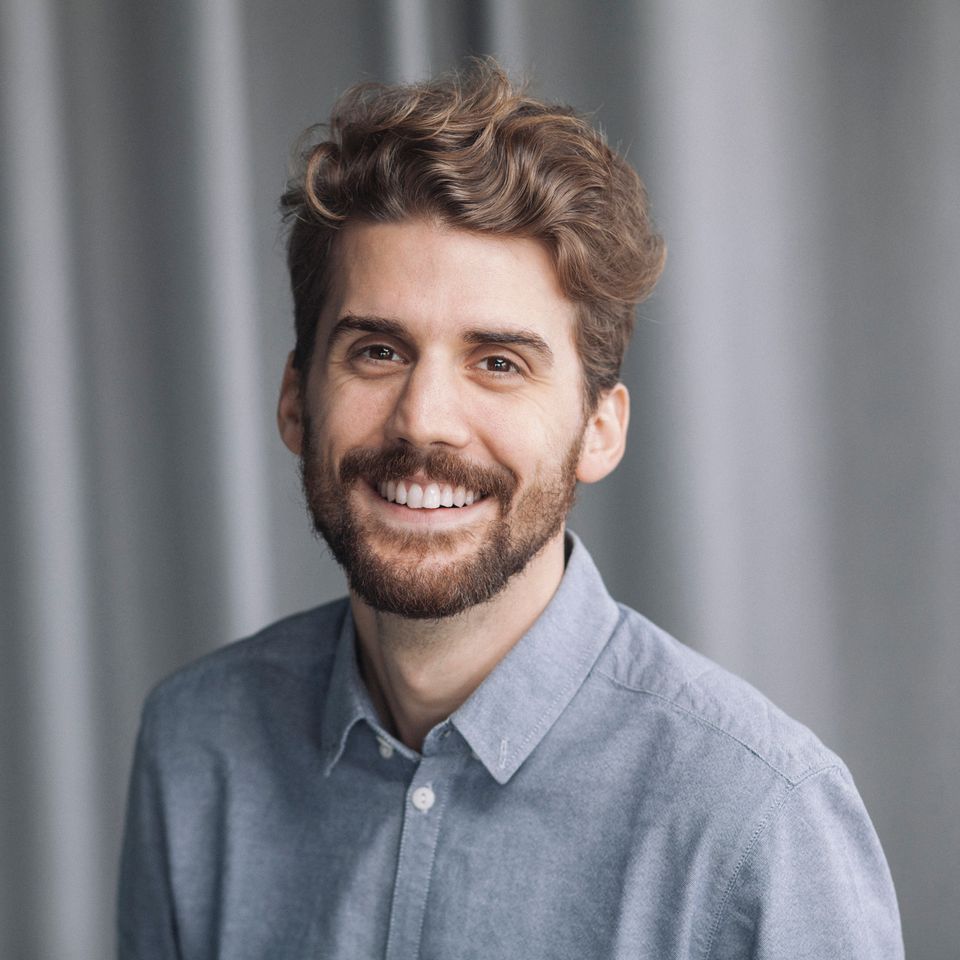UX Scotland 2014: Interview with Tin Kadoic

Tin Kadoic is the co-founder of the multi-award winning digital agency Brlog, university lecturer, and community leader in the Croatian UX community. I spoke to him about his background, the Croatian UX scene, and juggling industry, university, and community contributions.
You caught on to the web early. You’ve had a personal portfolio site up back in 2001 when you were only 16 years old (with its 2008 12th version immortalised online). How did you get interested in the web?
First I got interesting in building things. Like many children, I spent much of my time playing with LEGO. There was no greater joy than to take existing blocks and make up something new. I sat on the living room carpet, building in silence for a few hours. The most important part came afterwards, showing the end product to my mother. I was so happy and proud.
Enter the computer. I first got an IBM in the mid 1990s, direct from the US as it wasn’t available in Croatia. A computer which I had to break, reset, delete and reinstall quite a few times. There were nights where I though there was no going back — I deleted the command.com and autoexec.bat files. This helped me better understand computers, and have some empathy towards technology in general.
You’ve won a number of web awards over the years with a number of projects ranging from Croatian political party sites to kids online communities. Are there any particular projects you’re particularly proud of?
Looking back at our shelf of awards, I’m mostly proud of the ones that say “Innovative use of technology”. I’ve always loved our labs projects, which evoke creativity, experimentation, exploration of new types of emotions and interactions. Through these types of projects, we learn a lot and sometimes, magic happens. It’s great when someone recognizes and applauds that.

You’re based in Zagreb, Croatia where you’re the local leader of IXDA Croatia. Are there any particular local challenges that you have to deal with that UXers from other countries could learn from?
Croatian UX professionals face similar problems and issues as their colleagues in Europe, but some are unfortunately accentuated because of the rules and limitations of small markets. We face a large number of uneducated clients and companies with dinosaur processes. I would love to find out the percentage of management that’s aware of the importance of UX and the possibilities of improving their business through updating their processes and accepting the zeitgeist of UX methods.
What interesting sites or projects have come out of Croatia that UXers should take a look at?
Amazing projects and experiments come out of a small Croatian based studio called Creative Nights run by Marko Dugonjić. He’s one of Croatia’s best— an international speaker, coauthor of the latest Smashing Magazine book with a strong focus on responsive web typography. I would really encourage everyone to look at his website and his experiments such as the face detection responsive typography.

You currently balance being being a head of a design agency, teaching at the Studij Dizajna, and experimenting with physical computing (which incidentally led you to the topic of your UX Scotland talk). What do you get from doing all three and do you have any recommendations for people wanting to branch out from industry to doing teaching?
I know that many share my view that teaching is an extremely important part of growing as a professional. Some do it through writing, other organize meetups or workshops. I try to do a lot of them. Teaching in a university allows me to inspire and influence students, people who are 19 years old and still confused about a lot of things in the world, not just design.
I won’t lie, sometimes it’s really really hard—having studio work with students from 9am to 8pm can drain enormous amounts of energy. On other hand, when I see that one project, that one student with a spark in his eye, I think to myself, it was worth it.
Working in industry and teaching forces you to be up to speed on both at any given time. You bring your knowledge from professional projects to your lectures. Likewise, you take the energy, creativity and ideas you get from students, and apply that to your everyday work.
There are initiatives such as the General Assembly that allow anyone to start teaching, but also workshops as parts of conferences (such as the ones at UX Scotland).
Working in industry and teaching forces you to be up to speed on both at any given time.
My main recommendation to others that would love to do teaching is just — start.
You will be talking about ‘Foraging for Creativity’ at UX Scotland next week.
I’m thrilled to be one of the closing talks. There will be a plethora of amazing hands-on talks at the conference about tools, processes and projects and I feel that my talk complements them in a great way, because it looks on the same things through a different lens.
Tin Kadoic will be presenting his talk ‘Foraging for Creativity’ at UX Scotland, which takes place in Edinburgh from 19-20 June 2014. Tickets are available.
For those that are interested, a similar talk he gave for World IA Day is available online. Get your Babelfish out though, as it’s in Croatian.
Member discussion